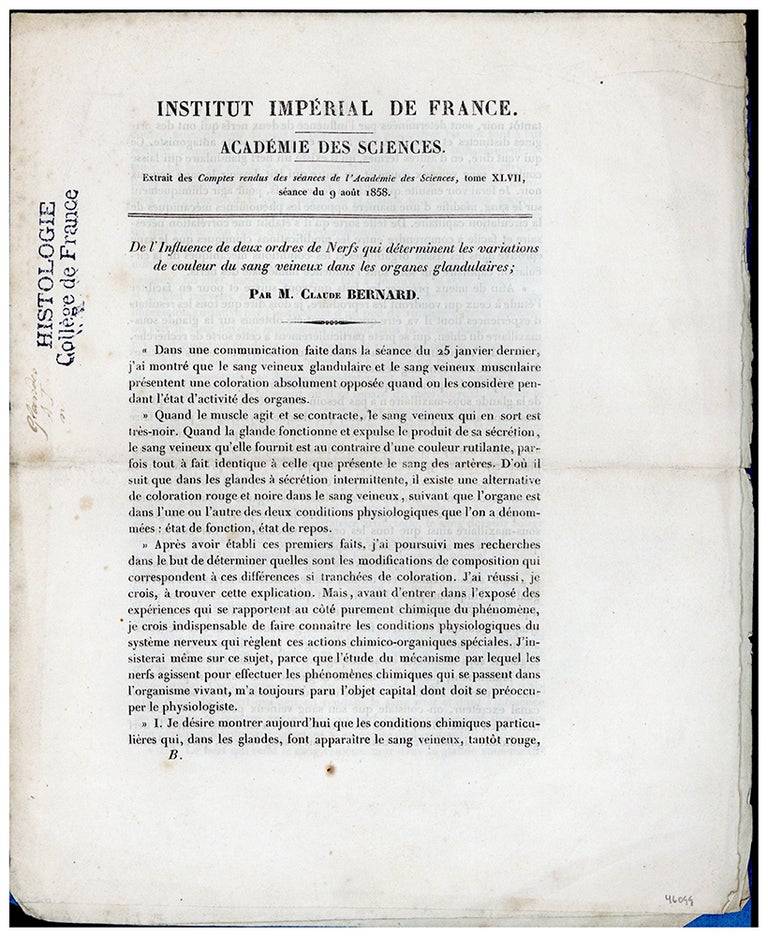
De l'influence de deux ordres de nerfs qui déterminent les variations de couleur de sang veineux dans les organes glandulaires. Offprint
Publisher Information: 1858.
Bernard, Claude (1813-78). De l’influence de deux ordres de nerfs qui déterminent les variations de couleur de sang veineux dans les organes glandulaires. Offprint from Comptes rendus des séances de l’Académie des Sciences 47 (1858). 8pp. 281 x 229 mm. (uncut). Original plain wrappers, creased horizontally, tiny chips in spine, 1 or 2 small stains. Light foxing but very good.
First Edition, Offprint Issue of Bernard’s paper announcing his discovery of the vasomotor nerves. “The announcement of the completed discovery was made to the Academy of Sciences August 9, 1858. There were two new experiments. In the first, Bernard cut the vein of the submaxillary gland to estimate the rate of blood flow through it. He found that the drops escaped much faster during stimulation of the chorda tympani [a branch of the facial nerve] than when the gland was at rest; the blood was bright red and had a pulsatory movement. He now drew the conclusion that the dilation of the vein resulting from the stimulation of the chorda tympani permitted the blood to enter the vein so rapidly that the arterial pulsation was not lost (i.e., a venous pulse was produced). In the second experiment, he took advantage of the double nerve supply to the submaxillary gland, and by stimulating the sympathetic nerve caused the vessels to constrict, the blood flow to decrease almost to zero, and the blood itself to become dark. His result was now perfectly clear-cut. The sympathetic nerve acts to constrict the blood vessels of the submaxillary gland, the chorda tympani to dilate them, and these actions accompany the secretory function of the gland so as to furnish an abundant blood supply during actual secretion. The action of both vasomotor and vasoconstrictor nerves had been demonstrated in a flawless experiment” (Olmsted, Claude Bernard and the Experimental Method in Medicine, p. 105). Bernard has been called “the founder of the modern concept of vasomotricity” (Montastruc, Rascol and Senard, p. 183). Montastruc, Rascol and Senard, “The discovery of vasomotor nerves,” Clinical Autonomic Research 6 (1996): 183-187. Garrison-Morton.com 774.
Book Id: 46099Price: $950.00
